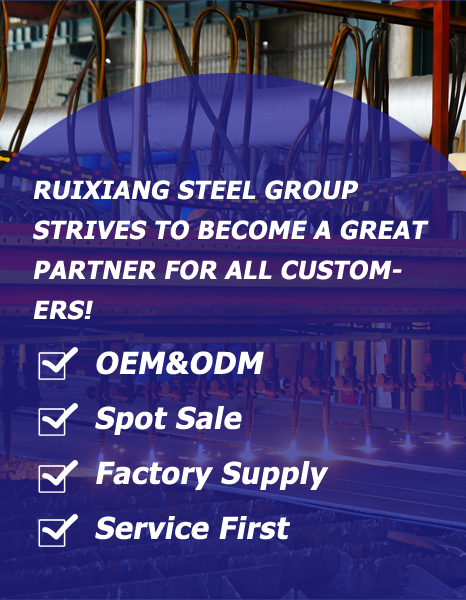Common Surface Defects in Hot Rolled Steel and How to Identify Them
 Click:280Edit: Ruixiang Steel
Click:280Edit: Ruixiang Steel Time:2025-10-09 11:32:15
Time:2025-10-09 11:32:15
Common Surface Defects in Hot Rolled Steel and How to Identify Them
Hot rolled steel is a fundamental material in countless industries, prized for its strength and cost-effectiveness. However, the high-temperature rolling process can sometimes introduce surface defects. Understanding and identifying these imperfections is crucial for ensuring material quality and selecting the right steel for your application.
Why Do Surface Defects Occur?
The hot rolling process involves shaping steel slabs at temperatures over 1700°F (926°C). During this process, the rapid oxidation of the steel surface forms a layer known as mill scale. Variations in cooling, rolling mechanics, and slab conditioning can lead to various surface irregularities.
Common Hot Rolled Steel Surface Defects
Mill Scale: This is the most common characteristic, not always a defect. It is a dark, oxidized layer that forms during cooling. While it can flake off, it is often removed via pickling for a cleaner surface.
Rolled-In Scale: This occurs when mill scale breaks off during rolling and gets embedded into the steel surface. It appears as a dark, pitted or streaky imperfection and can affect paint adhesion and corrosion resistance if not removed.
Scratches and Gouges: These mechanical marks can be caused by contact with handling equipment or other sheets. They appear as linear grooves on the surface and can act as stress concentrators.
Pitting: Small, irregular pits on the surface are often a result of over-pickling during the descaling process or corrosion that started beneath the mill scale.
Edge Cracks: These are longitudinal cracks or tears near the edges of the strip or plate, often caused by improper rolling temperature or excessive edge stretching.
How to Identify These Defects
Visual inspection is the first line of defense. Look for inconsistencies in the steel's surface texture and color:
A uniform, dark gray surface with a consistent scale is typical.
Look for raised seams, embedded foreign material, or irregular patterns that stand out from the normal mill scale.
Rough patches, pitting, or fine cracks that are visible to the naked eye.
For a reliable supply of hot rolled steel with minimized surface defects and consistent quality, partner with a trusted supplier. At Ruixiang Steel, our rigorous quality control processes throughout production ensure that our hot rolled steel meets high standards for your fabrication and manufacturing needs.
 Click:280Edit: Ruixiang Steel
Click:280Edit: Ruixiang Steel Time:2025-10-09 11:32:15
Time:2025-10-09 11:32:15

